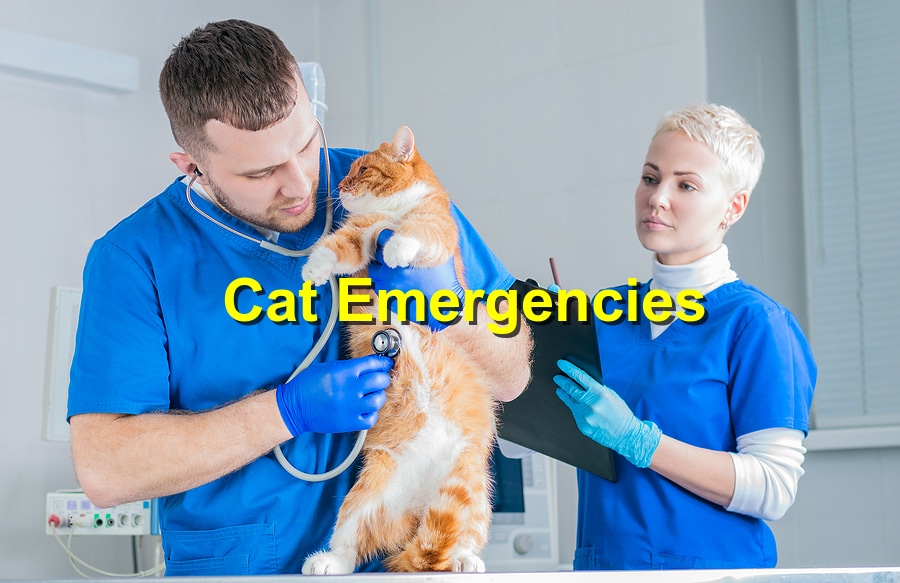Being aware of potential cat emergencies and knowing how to respond promptly can be lifesaving for your feline companion. Here’s a guide to recognizing signs of common cat emergencies and the appropriate actions to take:
1. Difficulty Breathing
Signs: Rapid or labored breathing, choking, or gasping for breath.
Action: Keep calm, remove any potential obstructions, and seek immediate veterinary assistance.
2. Severe Injury or Trauma
Signs: Visible wounds, excessive bleeding, or obvious signs of pain.
Action: Gently restrain your cat, cover wounds with a clean cloth, and transport them to an emergency vet clinic.
3. Ingestion of Toxic Substances
Signs: Vomiting, diarrhea, seizures, tremors, or lethargy after potential exposure to toxins like certain plants, chemicals, or human foods.
Action: Contact your vet or a pet poison helpline immediately for guidance. Try to identify the ingested substance for quicker treatment.
4. Seizures
Signs: Uncontrollable shaking, convulsions, or loss of consciousness.
Action: Ensure a safe environment, keep your cat away from hazards, and seek immediate veterinary attention.
5. Difficulty Urinating
Signs: Frequent attempts to urinate, straining in the litter box, or producing little to no urine.
Action: This could indicate a urinary blockage, which is a medical emergency. Contact your vet immediately.
6. Heatstroke
Signs: Rapid panting, excessive drooling, lethargy, or collapse, especially in hot weather.
Action: Move your cat to a cooler area, offer water, and use damp towels to cool them down. Seek veterinary help urgently.
7. Eye Injuries or Discharge
Signs: Redness, swelling, discharge, or squinting in one or both eyes.
Action: Gently clean around the affected eye and seek vet attention to prevent potential eye damage or infection.
8. Sudden Paralysis
Signs: Inability to move limbs, sudden loss of coordination, or dragging limbs.
Action: Keep your cat calm, avoid moving them unnecessarily, and immediately transport them to an emergency vet.
9. Allergic Reactions
Signs: Swelling, hives, itching, or difficulty breathing post-contact with allergens.
Action: Remove the allergen if possible and seek immediate veterinary assistance.
10. Unconsciousness
Signs: Loss of consciousness or unresponsiveness.
Action: Check for breathing and pulse, perform CPR if necessary, and rush to an emergency vet clinic.
Understanding these signs and taking swift action in emergencies can make a critical difference in your cat’s outcome. Always keep your vet’s contact information and a pet emergency kit readily accessible. Early intervention is key to ensuring the well-being of your beloved feline friend.




